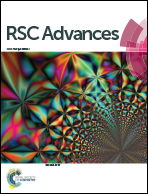Influence of the mediating behaviour of Sn according to its particle size on a Ni/yttria-stabilised zirconia porous anode structure in a direct carbon fuel cell
Abstract
Direct carbon fuel cells (DCFCs) are devices that convert the chemical energy of a carbon fuel into electrical energy with high efficiency. Although they can theoretically yield a high efficiency, DCFCs have considerable polarisation resistance, resulting from a solid-state interface between the fuel and anode surface. Here, we have employed Sn nanoparticles (<150 nm in diameter) as an interfacial mediator to reduce the polarisation resistance at the interface, through a liquid phase Sn interlayer which can improve both the mass transfer of the solid carbon fuel and electron transfer. We previously found that, when using Sn microparticles (>150 μm in diameter), an interfacial resistance became alleviated with the aid of liquid-state Sn; however, the Sn microparticles tended to accumulate on the anode surface because the Sn microparticles hardly permeated into the submicron anode structure. As a result, we chose Sn nanoparticles to demonstrate the effect of the size of Sn on mediation of the Ni/YSZ (Ni/Yttria-Stabilised Zirconia) surface in this study. Unlike microparticles, the nanoparticles were observed to more deeply permeate into the Ni/YSZ pores without accumulation. Nevertheless, Sn nanoparticles are more prone to oxidation, resulting in an ionically and electronically insulating material. Therefore, the power performance of Sn nanoparticle-mounted DCFCs is, in general, lower than that of Sn microparticle-mounted DCFCs. In addition, we found that there are two possible mediation mechanisms: one is physical mediation by improving both the mass transfer and electron transfer, and the other is a Sn redox looping cycle.


 Please wait while we load your content...
Please wait while we load your content...